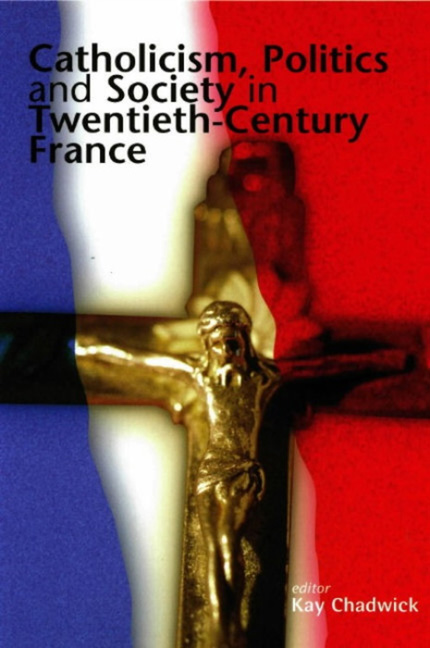Book contents
- Frontmatter
- Contents
- Editor's preface
- Notes on contributors
- Abbreviations
- Introduction
- 1 La laïcité en France au vingtième siècle
- 2 Antisémitisme des catholiques au vingtième siècle: de la revendication au refus
- 3 Catholicism and Nationalism: the Fédération républicaine, 1927–39
- 4 True and false modernity: Catholicism and Communist Marxism in 1930s France
- 5 Ralliés and résistants : Catholics in Vichy France, 1940–44
- 6 Les formes politiques de la démocratie chrétienne en France au vingtième siècle
- 7 Catholicism and the Left in twentieth-century France
- 8 Accueillir l'étranger : immigration, integration and the French Catholic Church
- 9 Yeast in the dough? Catholic schooling in France, 1981–95
- 10 Les femmes catholiques: entre Église et société
- 11 La sociologie religieuse du catholicisme français au vingtième siècle
- 12 Secularisation and the (re)formulation of French Catholic identity
- Select bibliography
- Index
Introduction
- Frontmatter
- Contents
- Editor's preface
- Notes on contributors
- Abbreviations
- Introduction
- 1 La laïcité en France au vingtième siècle
- 2 Antisémitisme des catholiques au vingtième siècle: de la revendication au refus
- 3 Catholicism and Nationalism: the Fédération républicaine, 1927–39
- 4 True and false modernity: Catholicism and Communist Marxism in 1930s France
- 5 Ralliés and résistants : Catholics in Vichy France, 1940–44
- 6 Les formes politiques de la démocratie chrétienne en France au vingtième siècle
- 7 Catholicism and the Left in twentieth-century France
- 8 Accueillir l'étranger : immigration, integration and the French Catholic Church
- 9 Yeast in the dough? Catholic schooling in France, 1981–95
- 10 Les femmes catholiques: entre Église et société
- 11 La sociologie religieuse du catholicisme français au vingtième siècle
- 12 Secularisation and the (re)formulation of French Catholic identity
- Select bibliography
- Index
Summary
Before the 1789 Revolution, national and religious identity in France were closely linked, and the mutual dependency of the French monarchy and the Catholic Church largely guaranteed religious unity. Following the definitive recognition of Protestantism in the eighteenth century and Napoleon's Concordat with Pope Pius VII in 1801, Catholicism was confirmed as the religion of the majority of French people but was no longer the official State religion. Then, on 9 December 1905, the promulgation of the loi de séparation des Églises et de l'État designated France a laïque (or secular) Republic, one where no religion is either publicly recognised or subsidised by the State, but where freedom of religious expression is guaranteed provided this occurs as a private act. Pluralist France was born alongside the formalisation of the secular principle for, by dint of officially not recognising any single faith, the State effectively permitted all faiths. Contemporary France's complex, heterogeneous society is mirrored in her diversified religious framework, where Catholicism now co-exists with the nation's other representative faiths, including Protestantism and Judaism (both long-established in France) as well as Islam, a more recent arrival but now France's second religion in terms of the numbers of practising faithful.
The twentieth century began with bitter conflict between the Catholic Church and the French State, based on an original definition of laïcité (secularism) in combative, separatist terms. Although the 1905 law formally concerned all faiths, the Catholic Church (rightly) considered itself the principal target. Suspicion and hostility coloured the Church's attitude, while themes of exclusion and oppression littered its discourse. The State's response was equally hostile, coupled with a determination to complete the secular programme begun with the Third Republic in 1870, namely to remove the hold which anti-revolutionary, intransigent Catholicism had long had over French society. But, as the twentieth century progressed, the Catholic Church itself came to find positive value in secularism. The loss of its public status as majority religion in 1905 was, after all, matched by its acquisition of social and political independence from the State. This, the Church argues, has granted it a free voice on matters of public interest and concern.
- Type
- Chapter
- Information
- Publisher: Liverpool University PressPrint publication year: 2000



